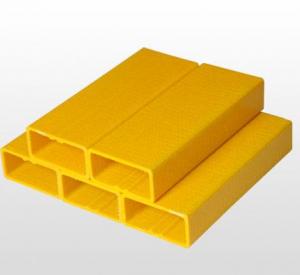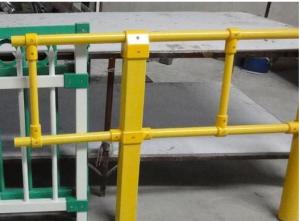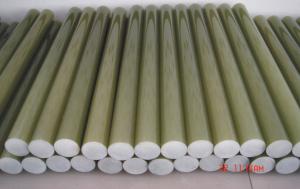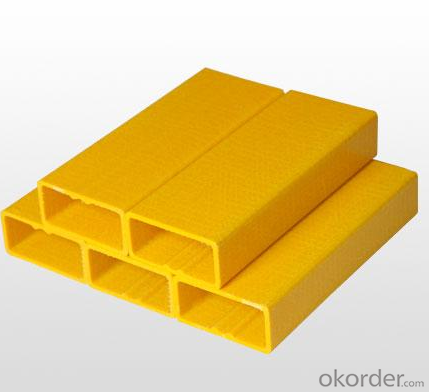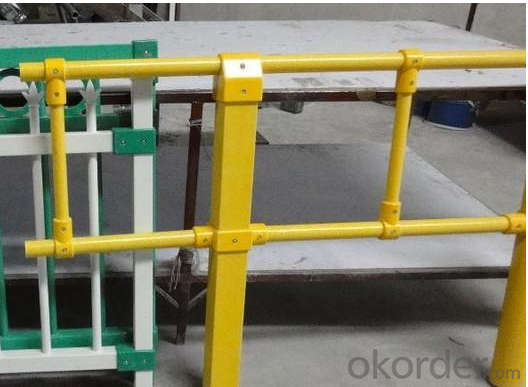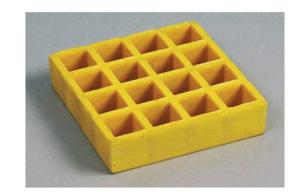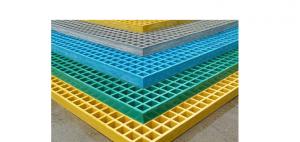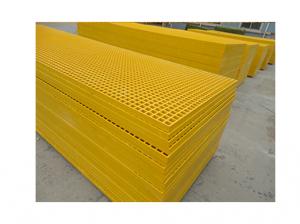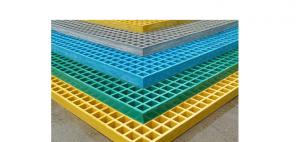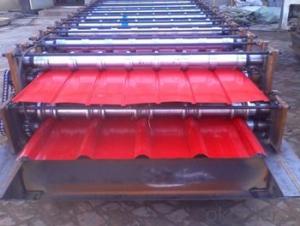FRP Pultrusion Profiles - High Strength, Corrosion Resistant, and Fire Resistant
- Loading Port:
- China Main Port
- Payment Terms:
- TT or LC
- Min Order Qty:
- 1000 m.t.
- Supply Capability:
- -
OKorder Service Pledge
OKorder Financial Service
You Might Also Like
Description of FRP PROFILE
FRP profiles have a lot of kinds, glass fiber reinforced plastic pipe, glass fiber reinforced plastic square tube, glass fiber reinforced plastic rectangular pipe, glass fiber reinforced plastic round bar, FRP flange beam.
The FRP profiles of the basic components for resin and glass fiber (including cloth, felt, etc.), it is a fiber (including glass fiber, carbon fiber, organic fiber and other metal, non-metallic fiber) as the reinforcing material to resin (mainly epoxy resin. Polyester resin, phenolic resin) for glue linker, auxiliary other auxiliary materials (main materials: release agent, curing agent, catalyst, sealing die agent, UV light stabilizer, clean die water, gel coat, etc.) composite and become. It has high temperature resistance, corrosion resistance, high strength, small specific gravity, low moisture absorption, extension small and insulation good and a series of excellent characteristics.
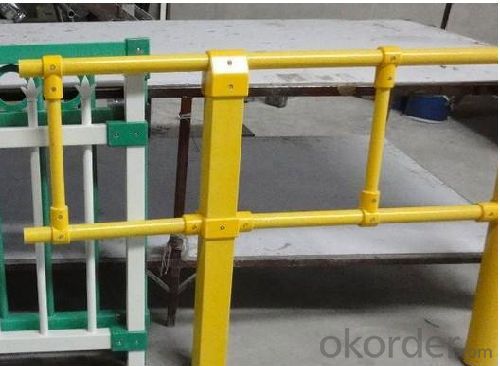
FRP Specification:
Round Rod: D2mm-20mm
Round Tube: OD3mm-38mm
Square Tube: OD12mm-100mm
Channel Rectangular Rod
T-shape and H-shape
C-shape
leg angles
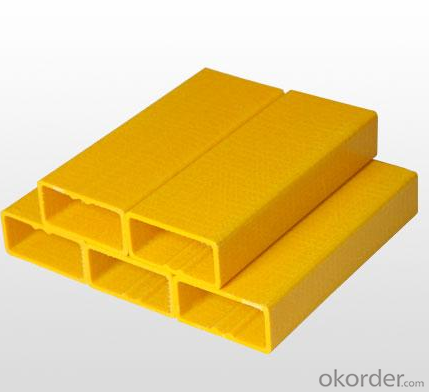
Product features
1.Corrosion-resistant
2.Light weight, high strength
3.Longevity of service, non-maintaining
4.Steady whole performance
5.Anti-ageing
6.Well insulated
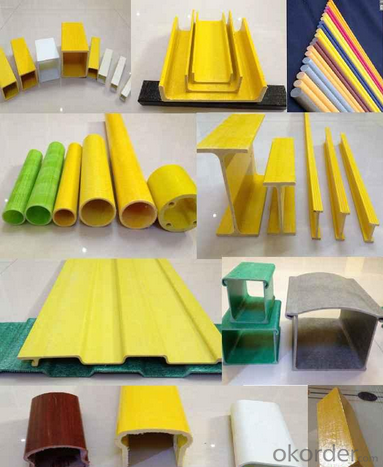
Application
The FRP channel products can resist corrosion from various gas or liquid such as acid,alkali,organic solvent and compound.They can be used as ladder material,and used in the electricity industries.
FAQ:
1.Are you the manufacture or trading Company?
we are the direct manufacturer
2.What are your payment terms ?
TT LC DP WESTERN UNION
- Q: Can FRP pultrusion profiles be used in the renewable energy sector?
- FRP pultrusion profiles are definitely applicable in the renewable energy sector. They offer several advantages that make them suitable for various applications within the industry. One significant advantage of FRP pultrusion profiles is their exceptional strength-to-weight ratio. As large structures, like wind turbine blades or solar panel frames, are often involved in renewable energy projects, the lightweight nature of FRP profiles can significantly reduce transportation and installation costs. Additionally, their high strength ensures better load-bearing capabilities, guaranteeing the integrity and longevity of renewable energy infrastructure. Another benefit of FRP pultrusion profiles is their resistance to corrosion. Structures in the renewable energy sector are frequently exposed to harsh environments, such as offshore wind farms or coastal solar installations. The corrosion-resistant properties of FRP profiles make them an ideal choice as they do not rust or degrade when exposed to moisture, saltwater, or chemicals commonly found in these environments. This characteristic significantly reduces maintenance and replacement costs, making FRP profiles a cost-effective solution for the renewable energy sector. Moreover, FRP pultrusion profiles offer design flexibility. They can be custom-engineered to meet specific project requirements, allowing for the creation of complex shapes and sizes. This versatility enables the development of innovative and efficient renewable energy solutions, such as aerodynamically optimized wind turbine blades or lightweight support structures for solar panels. In conclusion, FRP pultrusion profiles are well-suited for the renewable energy sector due to their lightweight nature, high strength, resistance to corrosion, and design flexibility. These characteristics make them an excellent choice for various applications, including wind energy, solar power, hydroelectric projects, and more.
- Q: Are FRP pultrusion profiles resistant to impact from heavy machinery?
- Yes, FRP pultrusion profiles are highly resistant to impact from heavy machinery due to their inherent strength and durability. The strong composite materials used in their construction, such as fiberglass reinforced polymers, provide excellent impact resistance, making them a reliable choice for applications where heavy machinery might be involved.
- Q: Can FRP pultrusion profiles be used in the water treatment industry?
- Yes, FRP pultrusion profiles can be used in the water treatment industry. FRP (Fiber Reinforced Polymer) pultrusion profiles are known for their excellent corrosion resistance, high strength, and durability. These properties make them suitable for various applications in the water treatment industry. FRP pultrusion profiles can be used in the construction of water treatment tanks, pipes, and other infrastructure. They are resistant to chemicals, including the harsh chemicals often used in water treatment processes. This corrosion resistance ensures a longer lifespan for the equipment and reduces maintenance costs. Additionally, FRP pultrusion profiles have a high strength-to-weight ratio, making them ideal for applications that require lightweight yet strong materials. This allows for easier installation and transportation of water treatment equipment. Furthermore, FRP pultrusion profiles offer design flexibility. They can be manufactured in various shapes and sizes to meet specific project requirements. This allows for customization and optimization of water treatment systems, ensuring efficient and effective water treatment processes. Overall, FRP pultrusion profiles are a reliable and cost-effective choice for the water treatment industry. They provide excellent corrosion resistance, high strength, and design flexibility, making them suitable for various applications in water treatment systems.
- Q: Can FRP pultrusion profiles be used in the construction of safety barriers?
- Indeed, FRP pultrusion profiles prove to be highly effective in the construction of safety barriers. When it comes to safety barrier applications, FRP pultrusion profiles surpass traditional materials like steel or concrete in numerous ways. To begin with, the strength and durability of FRP pultrusion profiles are remarkable. With their high tensile strength, these profiles can withstand substantial loads and impacts without deforming or breaking. Consequently, they are well-equipped to endure the forces that safety barriers may face, such as vehicular collisions or other accidents. Moreover, FRP pultrusion profiles possess a lightweight nature. When compared to steel or concrete, FRP is significantly lighter, which facilitates transportation, installation, and handling during construction. The reduced weight of FRP also proves advantageous in terms of ease of installation and cost-effectiveness. In addition, FRP pultrusion profiles boast excellent corrosion resistance. Unlike steel, FRP remains impervious to rust or corrosion, which can compromise the barrier's integrity and safety over time. This makes FRP particularly suitable for safety barriers exposed to outdoor environments or harsh weather conditions. Furthermore, FRP pultrusion profiles are non-conductive and non-magnetic, which presents advantages in certain safety barrier applications. For instance, in areas where electrical or magnetic interference poses a concern, such as near power lines or sensitive equipment, FRP barriers can provide an additional layer of safety by avoiding potential electrical or magnetic hazards. All in all, FRP pultrusion profiles offer a dependable and efficient solution for constructing safety barriers. Their strength, durability, lightweight nature, corrosion resistance, and non-conductive properties render them a suitable choice for a wide range of safety barrier applications.
- Q: What is the compression strength of FRP pultrusion profiles?
- The compression strength of FRP (Fiber Reinforced Polymer) pultrusion profiles varies depending on several factors such as the type of resin, fiber orientation, and design. However, on average, FRP pultrusion profiles have a compression strength ranging from 10,000 to 50,000 pounds per square inch (psi). It is important to note that these values are approximate and may vary depending on the specific application and intended use of the FRP profiles. Additionally, manufacturers typically provide technical data sheets that outline the compression strength and other mechanical properties of their FRP pultrusion products, which can be utilized for more accurate and reliable information.
- Q: What are the circumstances in which the pultrusion should be performed?
- (3) the heat deformation temperature of hot deformation temperature high extrusion is 186 DEG C, do not soften at high temperatures, -60 C constant crisp, to ensure the normal use of various environmental temperatures.(4) the water absorption is low, the water absorption of ordinary FRP products is less than 0.5%, while the water absorption rate of pultrusion section is only 0.257%, which is suitable for use in humid environment(5) heat transfer coefficient and low coefficient of thermal insulation rigid PVC pultruded profile approach, made with the single frame double glass insulating window insulation coefficient is only 2.69W/ (M2? K), while the thermal insulation coefficient of the same type of steel, aluminum window made up of 4.0W/ (M2? K). Show that the energy saving glass steel doors and windows is obvious.(6) strong corrosion resistance pultruded profile by 3%HCI solution for 24h, its hardness retention rate was 95%; the 3%NaCl solution for 24h, its hardness retention rate of 89%. so the FRP pultruded profiles for making doors and windows is not only suitable for general residential houses, hotels, restaurants, and more suitable for coastal areas and the corrosive working environment of industrial plant use.(7) to meet the requirements of the environment, the production process of the extruded section has the characteristics of low noise, high efficiency, low power consumption, low pollution, etc., and it conforms to the relevant environmental requirements of the state
- Q: What is the dimensional stability of FRP pultrusion profiles?
- The dimensional stability of FRP (Fiber Reinforced Polymer) pultrusion profiles is generally high. FRP materials have a low coefficient of thermal expansion, meaning they do not significantly expand or contract with changes in temperature. This property allows FRP pultrusion profiles to maintain their shape and dimensions over a wide range of environmental conditions, making them suitable for applications where dimensional stability is important.
- Q: Can FRP pultrusion profiles be customized or tailored to specific project requirements?
- Yes, FRP (Fiber Reinforced Polymer) pultrusion profiles can be customized or tailored to specific project requirements. Pultrusion is a manufacturing process that allows for the creation of continuous fiber-reinforced composite profiles with a high level of design flexibility. The specific requirements of a project, such as dimensions, shapes, and mechanical properties, can be accommodated by adjusting the design and manufacturing parameters. The customization process begins with understanding the project's needs and specifications. This includes determining the desired profile dimensions, cross-sectional shape, and mechanical properties such as strength, stiffness, and durability. Based on these requirements, engineers and manufacturers can develop a tailored solution. The customization of FRP pultrusion profiles can be achieved through various means. Firstly, the choice of reinforcement materials, such as fiberglass, carbon fiber, or aramid fiber, can be selected based on the desired mechanical characteristics. The orientation and volume fraction of the fibers can also be adjusted to optimize the strength and stiffness of the profile. Additionally, the resin matrix used in the pultrusion process can be customized to enhance specific properties, such as fire resistance, chemical resistance, or UV resistance. Various resin systems, including polyester, vinyl ester, or epoxy, can be utilized to meet the project's requirements. Furthermore, the pultrusion process allows for the incorporation of additional features during manufacturing. This includes adding inserts, fastener holes, grooves, or other structural details to the profile. These modifications can be tailored to the specific project requirements, ensuring compatibility with the overall design and assembly. Overall, FRP pultrusion profiles offer a high degree of customization and tailoring to meet specific project requirements. This versatility makes them a popular choice in various industries, including construction, infrastructure, aerospace, and automotive, where lightweight, durable, and corrosion-resistant materials are needed.
- Q: Are FRP pultrusion profiles resistant to sulfuric acid?
- FRP (Fiber Reinforced Polymer) pultrusion profiles are generally resistant to sulfuric acid. The corrosion resistance of FRP profiles is one of their key advantages compared to traditional materials like steel or concrete. Sulfuric acid is a highly corrosive substance, but FRP pultrusion profiles can withstand its effects due to the inherent properties of the composite materials used in their construction. The corrosion resistance of FRP profiles is mainly attributed to the resin matrix that encapsulates the reinforcing fibers. Most commonly used resins in pultrusion, such as polyester, vinyl ester, or epoxy, have excellent chemical resistance properties, including resistance to sulfuric acid. However, it is important to note that the resistance of FRP pultrusion profiles to sulfuric acid can vary depending on several factors. The concentration and temperature of the acid, as well as the specific resin formulation used in the profile, can influence the overall resistance. In highly concentrated or elevated temperature environments, it is advisable to consult with the manufacturer or supplier to ensure the specific FRP profile meets the required resistance level. In general, FRP pultrusion profiles offer a high level of resistance to sulfuric acid, making them suitable for various applications in industries where this corrosive substance may be present, such as chemical processing, wastewater treatment, or mining.
- Q: Are FRP pultrusion profiles resistant to seismic activity?
- FRP (Fiber Reinforced Polymer) pultrusion profiles are known for their high strength-to-weight ratio and excellent mechanical properties. However, when it comes to seismic activity, their resistance depends on various factors. In general, FRP pultrusion profiles can exhibit good resistance to seismic activity due to their inherent properties. The composite materials used in their construction, such as fiberglass and resin, offer high tensile strength and stiffness, making them capable of withstanding dynamic loads caused by earthquakes. Moreover, FRP pultrusion profiles have been extensively tested and proven to possess excellent fatigue resistance. This property is crucial during seismic events as structures are subjected to repeated dynamic loading. The ability of FRP profiles to withstand cyclic loading without suffering from fatigue failure significantly enhances their seismic resistance compared to traditional materials like steel or concrete. Another advantage of FRP pultrusion profiles in seismic activity is their lightweight nature. Their low weight reduces the overall mass of the structure, resulting in lower seismic forces. This weight reduction can lead to reduced seismic responses and less damage during an earthquake. However, it is important to note that the seismic resistance of FRP pultrusion profiles can be influenced by various factors. These include the design and quality of the profiles, the connection details, and the overall structural system in which they are used. Proper engineering and design considerations must be taken into account to ensure optimal performance and seismic resistance. In conclusion, FRP pultrusion profiles have the potential to offer good resistance to seismic activity due to their high strength, stiffness, and fatigue resistance. However, their performance in seismic events depends on various factors, and careful design and engineering practices are essential to maximize their seismic resistance.
Send your message to us
FRP Pultrusion Profiles - High Strength, Corrosion Resistant, and Fire Resistant
- Loading Port:
- China Main Port
- Payment Terms:
- TT or LC
- Min Order Qty:
- 1000 m.t.
- Supply Capability:
- -
OKorder Service Pledge
OKorder Financial Service
Similar products
Hot products
Hot Searches
Related keywords
